
Food Labelling Traps To Avoid
Posted on 25 Jan, 2020

Don’t be fooled into thinking that food is better for you simply because it says so. Everything printed on the pack, with the exception of the nutrition label, is an opportunity for marketers to sell you something. Rarely is it to help you make an intelligent decision that benefits your health and that of your family’s.
Of the many misleading food claims and labels you will find on the shelves, these are the ones we found to be the most deceptive.
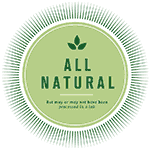 All Natural
All Natural
Unfortunately, the Food and Drug Administration (FDA) doesn’t have an official definition of the term and defer to a 20 year old policy that states it will not object to labels using this term as long as the product contains no added colors, flavors, or synthetic substances. What this means is that the manufacturers can label their products as natural when they choose the right wording (natural flavorings, minimally processed, fructose, invert sugars”).
The deception is that these are often umbrella terms for flavors derived from natural sources but processed in the lab like artificial flavors, so there isn’t much difference at all. Some natural products will have high fructose corn syrup and companies will argue that since it comes from corn, it’s healthy. Well, that isn’t true.
The bottom line: Eat as many fruits, vegetables, nuts, and grains in their natural form as possible.
 No Added Growth Hormones
No Added Growth Hormones
You will often see this claim on the packaging of meats (chicken, turkey, beef, even pork) along with milk. The deception is that the U.S. Dept. of Agriculture does not allow hormones to be fed to poultry or pork in the first place, so there is nothing special here at all (read the fine print, “Federal regulations prohibit the use of hormones,” is there). What these producers do instead is use antibiotics that do the same thing: speed growth by what the USDA calls “increasing feed efficiency.”
The bottom line: If you want truly added growth hormone free and antibiotic free meats and dairy, you will have to purchase certified organic products.
 Antibiotic Free
Antibiotic Free
Like "no added hormones," "antibiotic free" is a meaningless term, and it's actually illegal to use it on packages, according to the USDA. Manufacturers often skirt the issue by using phrases like "raised without antibiotics" or "no antibiotics administered," but the animals have been dosed with anti-microbials (drugs that the FDA defines differently but that work identically to antibiotics).
The bottom line: Large farms will use large amounts of these antibiotic products to increase animal growth, while smaller operations will reserve them for sick animals. Only organic regulations require that animals treated with antibiotics be removed from organic production, so purchasing certified organic products is the only way to avoid meat and dairy who have not been raised on them.
 Pesticide Free
Pesticide Free
Organic foods are soaring in popularity, even in spite of a bad economy, a recent survey found. One major reason for this trend is the increasing evidence on what pesticides such as Roundup and atrazine, the two most widely used pesticides in agriculture, are doing to our bodies: interfering with our hormones, increasing the risk of diseases such as Parkinson's and cancer, and causing birth defects and attention-deficit disorder in children.
The deception is that many food producers feature certifications from independent third parties attesting to the fact that the produce has been tested and found to be "free of pesticide residues." But in tests by the Consumer’s Union are conducted, the “pesticide free” products are still showing the same detection limits as other non-organic produce.
Bottom line: Support food companies that support organic. The only way to protect yourself and your family from the damages of synthetic pesticides is to buy certified organic foods that were grown without them. Proper food handling practices (carefully washing all produce before use) is a wise practice when organic produce is not available.
 Free-range
Free-range
Although a food label may say free range chicken, don’t assume your bird was scampering around outside Farmer Bob’s barn. Although the US Department of Agriculture does define the words free range, there are no requirements for the amount, duration, and quality of outdoor access.
These words usually evoke images of animals roaming the great outdoors, plenty of sunshine, fresh air, and lots of space to graze in. Sadly, this is not always the case. The deception: When one government official visited a free range chicken ranch, he found only a small gravel space between tightly packed henhouses.
The bottom line: As long as the door is open for five minutes a day this qualifies as access to the outdoors and the farm can call itself a free range farm, regardless of the number of birds, space per animal, or amount of time actually spent outside.
 Cage Free
Cage Free
You're most likely to see this label on poultry products, such as eggs or packages of chicken. And in both cases, it's misleading. The implication here is that the chickens aren’t kept in tiny cages their entire lives and have laid their eggs in a sunny henhouse. In reality, in most “cage free” operations, the chickens live in a windowless henhouse, not outside where they belong.
Lastly, there's also no independent third party that certifies egg producers as cage free, so you really have to take producers at their word.
The bottom line: Find a local chicken grower who raises small flocks. Not only can you make sure to ask him or her about whether their chickens see the light of day, but you'll also get safer meat: Salmonella contamination of chicken meat and eggs has been directly linked to the size of a chicken flock.
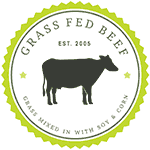 Grass Fed
Grass Fed
See this label, and bucolic scenes of grassy fields with healthy, happy cows probably come to mind. Think again. "Grass-fed" is a term that's sort-of regulated by the USDA, who has defined it to mean that an animal ate 100 percent grass and no corn or soy and had continuous access to pasture throughout its life. But the USDA allows anyone to use that terminology, provided a meat producer submits documentation saying that's what he or she is doing; no farm inspections are required to meet the definition.
And here’s the kicker. The rule applies only to cattle and other ruminant animals, but you'll often see it on packages for pork or chicken--animals that can't survive on a grass-only diet.
The bottom line: Unless you also see the words, U.S. Grass fed” accompanied by the USDA Process Verified shield, you may be paying for something you are not really getting. You can also look for the American Grassfed Association certification on the packaging (who has stricter standards than the USDA), or buy your meat from a farmer’s market and ask the farmer yourself where his cattle ate every day.
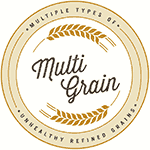 Multi Grain
Multi Grain
If one grain is good, "multi" grains must be better, right? Yes, except when all those multigrains are just multiple versions of unhealthy refined grains. And that could be what you're getting when you reach for that loaf of multigrain bread. The FDA has never explicitly stated that anything labeled "multi-grain" must contain the whole version of all grains that are used, and food marketers like to use the claim on wheat products because it makes their products seem healthier than they are.
The bottom line: "Multi-grain" isn't always bad; some companies do in fact use whole grains in multigrain breads, cereals and other baked goods. It just means you have to read the ingredients list and make sure the word "whole" precedes ever grain listed. Or look for the "100% whole grain" claim. That is regulated by the FDA and would mean that all grains used in the product are whole. Also, don’t trust that darker color is an indication of whole grain content; some breads and crackers have had caramel coloring added to them.
 Made With Real Fruit
Made With Real Fruit
Products that claim to be made with real fruit may not contain very much at all, or none of the type pictured on the box.
While companies must list the amount of nutrients they contain, such as fat and cholesterol, they do not have to disclose the percentage of ingredients, such as fruits and whole grain. This label is often abused in the same way “Made with Real Fruit” is applied to Pop-Tarts that contain less than 2% of actual fruit.
The deception that many manufacturers use is to put brightly colored pictures of fresh looking fruits on the package and tell you their product contains them when in reality the only “fruit” may come from some type of juice concentrate, food color dye, and sugar. For example, in 2012, a woman in California filed a class-action lawsuit over strawberry Fruit Roll-Ups that contained only pears from concentrate but no strawberries at all when the box clearly advertised strawberry on the box.
The bottom line: If you want “real” fruit, your best bet is to buy it in its natural form.
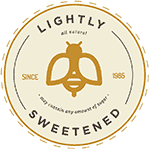 Lightly Sweetened
Lightly Sweetened
While sugar free and reduced sugar claims are regulated by the FDA, the term “lightly sweetened” is not, so technically, if a product claims to be “lightly sweetened,” it could contain any amount of sugar. For you, “lightly sweetened” might be a sprinkle of sugar. For Kellogg’s, it’s 14 g of sugars.
The bottom line: Whether a product is truly lightly sweetened or not should be determined by federal rules, not the marketing salesmen of the manufacturer.
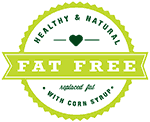 Fat Free
Fat Free
There are many foods that may not necessarily be free of fats, only below the required reporting levels. For example, if a food has less than .5 grams of fat per serving, the manufacturer may label it as fat free; for foods with less than 3 grams per serving, it may be labeled as low fat. Reduced fat food need only have 25% less fat than “regular” versions and “light” must have about 50% (1/3 less) fewer calories or fat.
Also remember that packages labeled as fat free could be loaded with sugar, and sugar-free products could be loaded with fat.
The bottom line: The problem is that these foods lack more than fat; they lack flavor. In order to enhance and make them more palatable, other ingredients are packed in: sugar, flour, salt, and other food enhancers. This typically means more calories, so beware, especially if you’re watching your weight.
 Light
Light
A food label may say a product, such as olive oil, is light, but manufacturers have been known to use the term to refer to the flavor rather than the ingredients. The flavor might be lighter, but you aren’t saving one calorie. The wording on light products can be confusing for consumers, but it is important to read the nutritional facts.
To be considered a light product, the fat content has to be 50% less than the amount found in comparable products.
The bottom line: To be considered a truly light product, the fat content has to be 50% less than that found in comparable products, so read the nutrition facts carefully.
Some Titles On Eating Healthy That We Love

by Michael Pollan

by Jo Robinson

by Michael Greger

by Thug Kitchen

 7 Ways Laughter Can Benefit Your Workout
7 Ways Laughter Can Benefit Your Workout The Best Carbs For Runners
The Best Carbs For Runners Why Going To The Gym Can Be Unhealthy For You
Why Going To The Gym Can Be Unhealthy For You Angry Yoga
Angry Yoga










